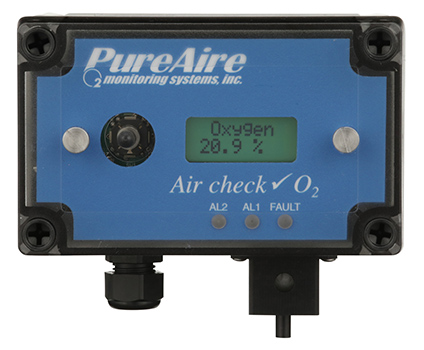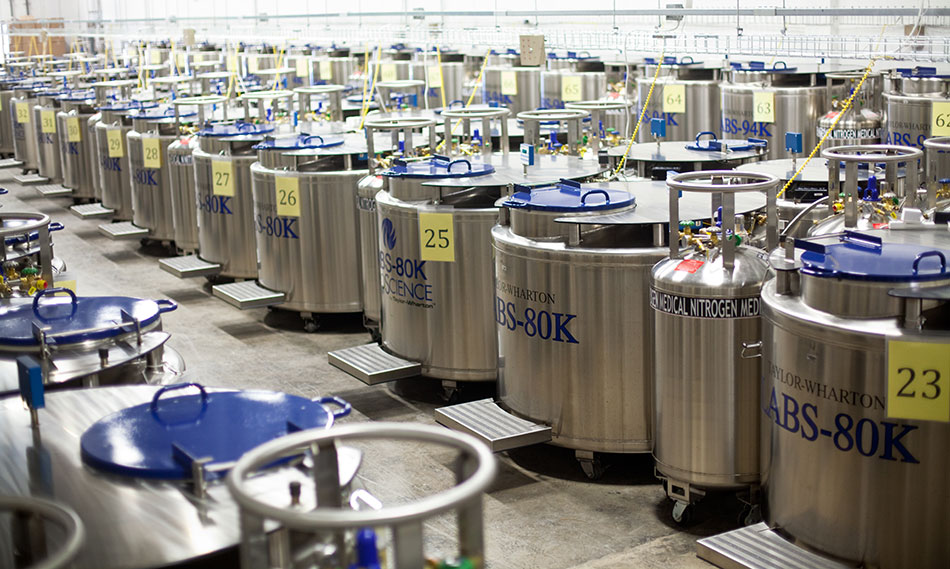Biorepository Safety
- By : PureAire Monitoring Systems
- Posted on : June 22, 2023
- News Room
What is a Biorepository?
A biorepository, or “biobank”, is a specialized facility designed to store, archive, and distribute biological samples for research or clinical purposes. Biorepositories house biological samples, such as blood, plasma, urine, saliva, tissues, DNA, and organs, among other specimen types, collected from consenting individuals. Critical associated information, including relevant health information about the donor, is linked to the sample, given a unique identifier, and uploaded into a laboratory information management system. Scientists use samples stored in biorepositories to research diseases and develop new treatments, drugs, and vaccines, among other applications. Biorepositories provide secure environments that help ensure the integrity of the samples stored within, and allow researchers an efficient way to access the samples they need for their studies.
How are Biological Samples Stored?
Cryopreservation is the most commonly used method for freezing and storing biological samples. This method most often uses liquid nitrogen (LN2) to achieve the ultra-low temperature necessary for cryopreservation, usually between -80°C and -196°C. Biorepositories use cryogenic freezers and LN2 to achieve and maintain the super-cold temperatures required for long-term sample storage.
Biorepositories must rely on a continuous supply of LN2 to ensure that samples stay fully frozen in order to preserve their integrity and usability. Liquid nitrogen is typically supplied through liquid nitrogen generators or bulk tanks located outside the facility, or from cryogenic cylinders or Dewar vessels located inside near the freezers.
Liquid Nitrogen Safety – Oxygen Monitors Can Reduce Risk
Cryopreservation ensures that the samples remain viable for future use. However, since LN2 is an oxygen-depleting gas that is both odorless and colorless, absent appropriate monitoring, biorepository personnel would be unable to detect a liquid nitrogen leak if one were to occur in a gas cylinder or supply line. When there is not enough oxygen in the air, persons working in the area can become disoriented, lose consciousness, or even suffocate from lack of oxygen. Additionally, a liquid nitrogen leak could lead to the loss of its super-cooling properties, causing the temperature to rise inside the freezer, possibly causing catastrophic damage to the biological samples.
As such, best practice calls for oxygen deficiency monitors to be installed anywhere there is a risk of nitrogen gas leaks. The National Institutes of Health’s Design Requirements Manual stipulates that, to warn of oxygen depletion, oxygen monitoring equipment is to be provided in freezer rooms and other rooms where cryogenic fluids (including liquid nitrogen) are supplied or stored.
PureAire Monitors
 PureAire Monitoring Systems’ Oxygen Deficiency Monitors continuously track levels of oxygen and will detect liquid nitrogen leaks before freezer failure jeopardizes either the integrity of stored samples or employee health. Built with zirconium oxide sensor cells to ensure longevity, PureAire’s O2 Monitors can last, trouble-free, for over 10 years under normal operating conditions. In the event of an LN2 gas leak, and a decrease in oxygen to an unsafe level, our Monitor will set off an alarm, complete with horns and flashing lights, alerting employees to evacuate the affected area.
PureAire Monitoring Systems’ Oxygen Deficiency Monitors continuously track levels of oxygen and will detect liquid nitrogen leaks before freezer failure jeopardizes either the integrity of stored samples or employee health. Built with zirconium oxide sensor cells to ensure longevity, PureAire’s O2 Monitors can last, trouble-free, for over 10 years under normal operating conditions. In the event of an LN2 gas leak, and a decrease in oxygen to an unsafe level, our Monitor will set off an alarm, complete with horns and flashing lights, alerting employees to evacuate the affected area.
The Oxygen Monitors should be placed wherever liquid nitrogen is stored, and in all rooms and areas where nitrogen is used.
PureAire Oxygen Monitors measure oxygen 24/7, with no time-consuming maintenance or calibration required.
Each PureAire O2 Monitor has an easy-to-read screen, which displays current oxygen levels, for at-a-glance readings by biorepository personnel, who derive peace of mind from the Monitor’s presence and reliability.



